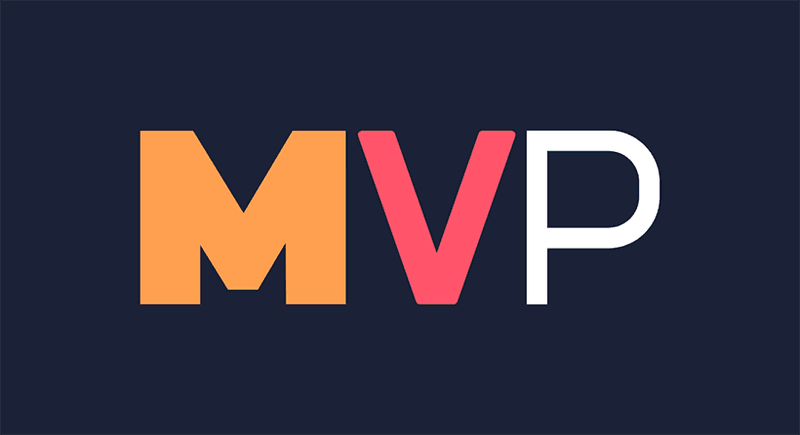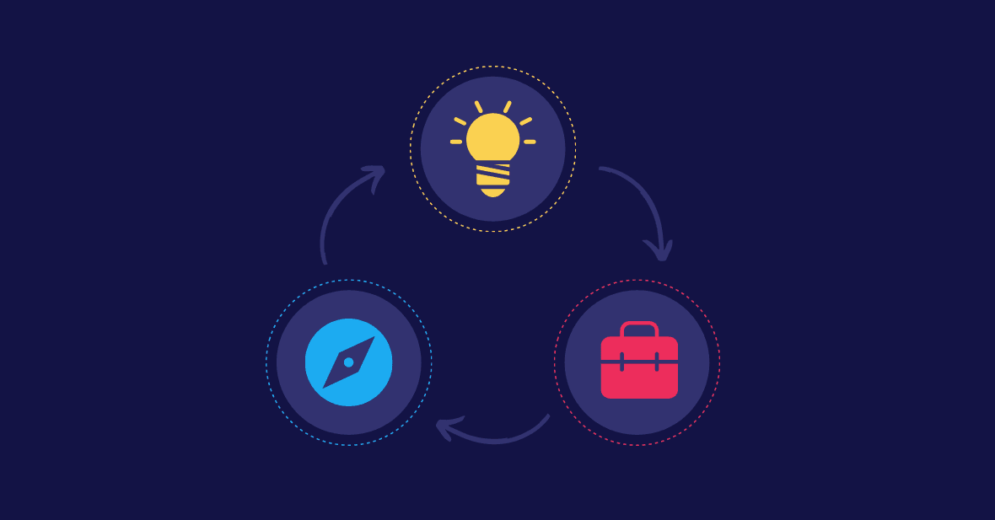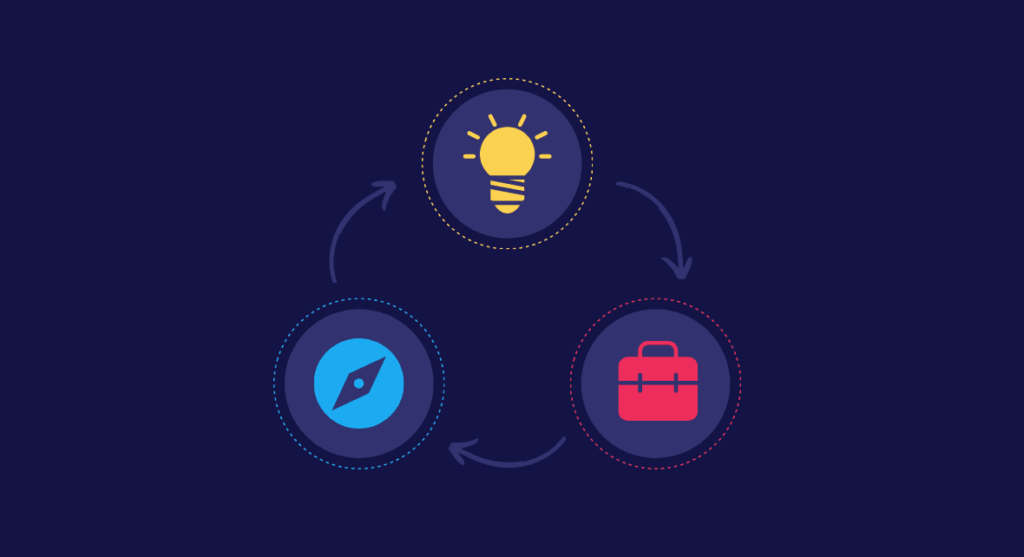Developing new products or even making improvements to existing ones can create certain risks for the company. It's not difficult to imagine the substantial investment of time and money required to develop a product, only to discover that it may not meet the user's needs.
In this regard, wouldn't it be beneficial to have a way to test the team's ideas for product improvement before implementing them? The great news is that there exists a concept that can significantly mitigate the risks involved in the product development process. It places a strong emphasis on learning and iteration through user testing cycles.
That concept is none other than Lean UX! By embracing Lean UX, the focus lies on reducing risks while maximizing learning. It empowers the team to iterate and enhance the product based on valuable user feedback.
What is Lean UX?
Lean UX is a Design concept that proposes a fresh approach to work, aiming to enhance efficiency and agility in processes. Its unique perspective doesn't view product development as a mere deliverables-driven process, but rather as a focused hypothesis validation process centered around the user experience.
In this regard, the objective of Lean UX is to gather user feedback as swiftly as possible. This enables prompt decision-making and precise product improvements with agility. This concept stems from the teachings of two other concepts — Lean Startup and Agile Philosophy — and was eloquently described by Jeff Gothelf in his book: Lean UX.
Reading tip: 5 Must-Read Books to Jumpstart Your Career in UX Design
What is the underlying mindset of Lean UX?
As mentioned, Lean UX was developed based on two other concepts: Lean Startup and Agile Philosophy.
Lean Startup

Lean Startup is a concept devised by Eric Ries to revolutionize the way startups conduct business. In this regard, Lean Startup introduces a fresh mindset that draws inspiration from Lean Manufacturing, emphasizing the elimination of waste to maximize the value delivered to consumers by the startup's product.
Moreover, Ries advocates for a practical approach to product development. Rather than relying on traditional Business Plans filled with projections and numbers, Lean Startup proposes the use of a canvas known as the Business Model.
In practice, Lean Startup fosters rapid learning through customer and user responses and feedback. This continuous and agile learning process in product development has significantly impacted the role of UX Design within the workflow.
Agile Philosophy

The Agile Philosophy first emerged to enhance software development, but it quickly gained popularity across various industries. This philosophy puts a premium on speed and aims to streamline processes, cutting through bureaucratic hurdles.
As a result, it has influenced several methodologies, including Lean UX. In practical terms, the Agile Philosophy brings numerous benefits that can be summed up as follows:
- Clearer insights into product development progress and challenges, thanks to improved transparency.
- Minimized time wastage by eliminating unnecessary delays and focusing on efficient workflows.
- Better collaboration and understanding among team members, leading to enhanced communication effectiveness.
The combination of these different schools of thought, along with the innovative business models embraced by startups, has given birth to the concept of Lean UX, as brilliantly described by Gothelf.
Would you like to know more about the Agile Philosophy? Read this article!
What are the core principles of Lean UX?
Lean UX is all about cutting waste and providing users with the utmost value through the product. It's a concept that revolves around iteration and constant improvement based on user feedback.
To make Lean UX work like a charm and ensure maximum efficiency,there are key foundational principles that form the core of Lean UX. These principles can be categorized into three main areas:
- Team Organization;
- Culture;
- Processes.
By adhering to these principles, organizations can embrace Lean UX and harness its power to enhance product development and user satisfaction.
Principles for team organization in Lean UX

- Cross-functional teams: it is crucial to create a team with professionals from diverse backgrounds, such as UX, Business, Marketing, Developers, etc., who collaborate closely.
- Small, dedicated, and co-located: in addition to being cross-functional, teams should be small, with a maximum of 10 members, dedicated to one project at a time, and located in the same room or space to facilitate communication.
- Self-sufficient and empowered: the team should have the autonomy to make relevant decisions regarding the project.
- Focus on problem-solving: the team should work towards solving a stated problem rather than implementing new solutions.
Principles for Culture

- From doubt to certainty: in Lean UX, we should not be driven by assumptions or personal preferences. We must understand that each premise and hypothesis should be tested before they can be considered true.
- Progress is about results, not deliverables: progress should be measured in tangible outcomes, such as increased user satisfaction. Progress is not about adding more features to a product that doesn't work.
- Shared knowledge: it is important that everyone on the team has a shared understanding of the product, the user, and any other crucial elements of the project.
- No Rockstars, Gurus, or Ninjas: similar to the previous principle, a Lean UX team should not rely on a few individuals with exclusive knowledge. Knowledge should always be shared among team members.
- Permission to fail: the team's mindset should prioritize experimentation and validation. The focus is not on being right, but on learning from failures.
Principles for processes

- Small batches: create and develop only what is necessary for the product to evolve and create value (MVP). The focus is on learning and risk reduction.
- Continuous discovery: in Lean UX, customer and user feedback is important. It is essential to have a mindset of discovery and always engage with consumers to understand what they do and why they do it.
- Getting out of the building: leave the office! Go out into the field to test ideas and learn from them instead of sitting at your desk.
- Show your work: get your ideas out of your head and show them to the public.
- Build and analyze: building a first version of an idea is better than endlessly discussing whether it will work or not.
- Don't focus on deliverables: focus on creating and validating hypotheses. Don't just focus on creating deliverables that don't add value to the user.
Reading tip: Laws of UX: The Basic Principles of UX Design
Lean UX: the process

The Lean UX process is driven by three main ideas: Think, Make, and Check.
- Think: this involves creating assumptions for a given problem and its context. Based on these assumptions, hypotheses are formulated and tested.
- Make: relates to developing a product that meets the user's needs. It is important to understand the concept of MVP (Minimum Viable Product), which we will discuss further.
- Check: this is about testing the product and validating or invalidating the hypotheses created about it. Despite being the last item on this list, it serves as a starting point for interactivity.
These three ideas form a loop, where after checking and receiving user feedback, we return to the beginning, which is thinking.
Notice how these ideas are very similar to those found in other concepts such as Lean Startup, Agile Philosophy, and Design Thinking. Consequently, they all relate to and complement each other.
Lean UX elements
As we delve deeper into the Lean UX process, we may encounter some basic questions, such as what a premise is or how to create a hypothesis.
In this regard, let's quickly explain each of these elements to help you understand how to apply and create them.
Premises
Premises are elements that need to be created collectively with the entire team. This allows for diverse perspectives to be captured and ensures that everyone is aligned with what will be defined. To define premises, you can start with simple questions like:
- Who are the users?
- What problem needs to be solved?
- What is the purpose of the product?
- When do users use it?
- What is its key functionality?
- What are the risks it poses?
Of course, the questions can vary based on your objectives. Also, as the project provides new insights, the premises may change accordingly.
Additionally, the answers to these questions may generate other premises too. In such cases, prioritize the most important ones.
Hypotheses
After defining the key premises, it's time to create the hypotheses you will test at the end of the cycle.
The hypotheses should reflect an existing belief and have the potential to improve or solve the problem proposed by the project.
For example, if we simplify the registration screen, the number of registered users may increase.
This can be a hypothesis based on the premise that users don't have the time or the patience to complete extensive registration screens.
The important aspect of creating a hypothesis is understanding the expected outcome of the idea and how we can measure it to evaluate if it is true or not.
In the case of the example above, evidence to validate the hypothesis would be an increase in the number of registrations after simplifying the registration screen or page.
Therefore, a hypothesis is not just a random assumption. It needs to be evidenced and validated. It is about data, not guesswork.
Minimum Viable Product – MVP

The famous MVP: Minimum Viable Product, is another essential element in the Lean UX process.
The MVP is the most basic version of a product that can test the hypotheses created in the process. Therefore, the MVP is not a fully featured or complete product.
After validation and if it proves to be successful, the MVP can evolve with each cycle and each hypothesis test.
On the other hand, if there is no validation that the hypotheses were effective, the MVP may be discarded.
Test and validation
Testing is essential in the Lean UX process; it will help you obtain answers to your hypotheses.
It is important to remember that the Lean UX process is fast-paced, with limited time available. Therefore, the testing phase should be conducted swiftly and accurately to ensure that the results obtained yield the necessary insights.
The testing and validation phase can be quite challenging, particularly in larger UX Design projects where testing tends to be more elaborate and time-consuming.
Reading tip: Usability Test: How To Prepare And Conduct One?
How to adapt the research process to work with Lean UX
One of the major challenges of Lean UX is to learn quickly alongside users in order to validate or invalidate your hypothesis.
The research process is complex and crucial for the entire execution of the Lean UX concept. Therefore, it is essential to treat this process with utmost importance.
However, agility is a key aspect of Lean UX as a whole. Thus, there is a need to adapt the research process to meet the shorter timelines of Lean UX.
1) Start small
The desire to create a robust research process may be greater than its actual necessity.
In Lean UX, there is no need for an extravagant research program, as the essence of Lean is to be streamlined.
In this sense, start small with your planning and research program. More than technique, consistency is key. Obtain feedback from users consistently and frequently.
By starting small, you will naturally reach a level of UX maturity where you can refine your results better, incorporating qualitative elements into your research.
2) Involve everyone
One of the principles of Lean UX is to assemble a multifunctional team, which is also crucial for the research process.
Different professionals have different perspectives on the same situation. Therefore, while one person conducts research with users, other team members should observe and take note of insights and observations to be discussed and analyzed later.
A good suggestion is to involve stakeholders in the research process. Try to involve them in the planning and selection of participating users.
3) Create a research plan
A research plan encompasses the research objectives, methodologies to be used, and any other elements that provide clarity and focus to your research, such as:
- Budget
- Roles and responsibilities
- Tasks and scripts

Additionally, a research plan can transparently demonstrate the benefits of the process to stakeholders.
Another important aspect of the research plan is to share it with the rest of your team. In this regard, transform the plan into a shareable One Page document that can always be easily accessed by the team and stakeholders.
4) Create a research panel
One of the most challenging aspects of conducting research is scheduling and recruiting participants. The beginning is always more difficult, but as you start finding users to participate, ask them at the end of the research if they would be willing to participate in future studies.
This way, you can begin building a panel with various contacts of users who have already shown interest in participating in your research. This practice greatly expedites the research process, making it worthwhile to incorporate it into your Lean UX workflow.
Reading tip: 4 Fundamental Principles of User-Centered Design
5) Automate the recruitment process
One option to expedite the participant recruitment process is to automate it. The idea is to create an automated survey to determine if the respondent fits the profile to participate in your research. If they meet the criteria, the respondent receives a message asking if they would like to participate in the study. If they accept, the scheduling is done automatically, and you can proceed with the research on the agreed-upon date.
Automating the process is not easy to calibrate, but once it starts functioning, it can yield favorable results and increase efficiency in your workflow.
The benefits of Lean UX: why you should use it

Lean UX is a concept that emerged with the aim of accelerating product development and reducing waste throughout the entire process.
Despite prioritizing speed, Lean UX does not overlook the commitment to delivering results. In this sense, Lean UX brings several benefits, including:
Efficiency and cost reduction
By reducing time and increasing the speed of solution development, your company saves valuable project time. Instead of spending three months on developing a product that may not please the user, test your hypothesis and see if the product concept makes sense. It is better to validate hypotheses and make quick decisions rather than investing significant time and money in a solution that won't yield results for the organization.
Saves time
Connected to the previous benefit, Lean UX clearly saves your company time. Additionally, the focus on constant testing and iteration allows for course correction during the project, ensuring that the product or solution consistently adds value for the user.
User-Centered Design
It goes without saying that Lean UX incorporates the principles of User-Centered Design in its processes. This becomes particularly evident in the development of an MVP based on customer and user feedback. Thus, Lean UX represents a new way of working within UX Design that remains rooted in the profession's core principles.
Reading tip: Standardization In UI: Consistent Interface Design
It is data-driven
Being data-driven means being oriented towards data. In other words, everything related to Lean UX is based on evidence and data gathered from research and user feedback.
In this sense, there is a reduction in risk during development and implementation because decisions are not based on assumptions or personal preferences.
Moreover, utilizing data can help identify flaws and inconsistencies when something goes wrong along the way.
Case study: CarMax

CarMax is a large chain of used car dealerships in the United States. The company aims to improve the user's buying experience, which includes both online and offline elements. Users can access the CarMax website, search for the desired car, and schedule a test drive. However, the actual purchase must be made physically at one of the company's stores.
To redesign its buying journey with a user-centric approach, CarMax began using the concept of Lean UX. The design team created the following hypothesis: if customers have a better understanding of car financing, they will have a better buying experience.
To validate the hypothesis, CarMax conducted research with various consumers and designed multiple versions of a loan application. With each iteration, they gained more insights into the user's buying experience and could improve the app's design.
Additionally, the Lean UX team collaborated closely with CarMax's sales consultants in their stores. This ensured that all customer information was integrated into the offline part of the buying process.
The result of this project was the creation of a mixed (online and offline) experience that helped customers find the best car options based on their purchasing potential. Furthermore, the success of the project not only led CarMax to design a better experience for its customers but also caused the company to change its culture and internal processes, including hiring and team-building.
Final thoughts
Lean UX has great potential to transform how companies develop products and meet user needs. Based on its fundamental principles, Lean UX prioritizes validatin hypotheses derived from premises and tested through iterative cycles, which bring new insights about the user experience.
However, it is important to adapt certain processes to fit the Lean UX concept, such as the research process, for example. Nonetheless, it is a concept that offers numerous benefits to companies and UX design teams.
Keep learning with the following articles:
- Experimentation in Design: How To Make Data-Driven Decisions
- Mastering Usability Testing: 10 Essential Tips
If you're looking to upgrade your game and advance in your career, you might enjoy these:








